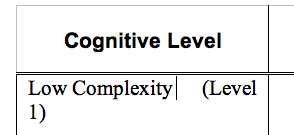Non-breaking spaces: They aren’t just for French punctuation, you know
Posted by Pierre Igot in: MicrosoftOctober 19th, 2004 • 5:19 am
As regular Betalogue readers know, I do a fair bit amount of work in French with my Macintosh computer. Because of this, I am particularly sensitive to issues that affect French-speaking users. I am constantly amazed and frustrated by the utter lack of respect that non-English-speaking users get from most major software developers. Things have got better over the years, of course, but they are still far from being as good as they should be.
The Word 2004 bug with Postscript fonts and the non-breaking space is a perfect example. What is it about such a bug that (1) makes it possible for the bug to slip through regular software testing (2) requires so much time for Microsoft to fix?
I suspect that it has a lot to do with the fact that the non-breaking space is mostly used by non-English-speaking users. This character is required in French punctuation, no matter which flavour of French you are referring to.
In this particular case, I can only conclude that Microsoft didn’t do any extensive testing of Word 2004 on French-language systems.They probably had one or two guys testing the thing in French, but these guys just happened to have only (Microsoft-blessed) TrueType fonts in their system. There are tens of thousands of Postscript (Type 1) fonts in use out there. But having a French-speaking Word 2004 tester who also uses Postscript fonts was just too much to ask, I guess.
Still, this particular bug also tells us a bit about English-speaking users of Word. While the non-breaking space is heavily used in French punctuation, there is no reason why English-speaking users shouldn’t also use it regularly. Here’s a perfect example:

In this table, it’s quite clear that the “1” should stay with “Level” on the same line. How do you achieve this? Well, by using a non-breaking space between “Level” and “1” instead of a regular space.
Unfortunately, I suspect that most English-speaking Word users don’t do that. Instead, they insert a manual paragraph break before “Level” so that both “Level” and “1” end up on the same line. But that’s the brute force approach.
Non-breaking spaces are underused by English-speaking Word users in the same way that the “Keep With Next” and “Keep Together” options are underused when it comes to controlling how paragraphs or lines of text stay together.
Maybe if English-speaking Word users used non-breaking spaces more frequently, bugs such as the one above would get detected and fixed earlier. On the other hand, even today there are still far too many situations where non-breaking spaces are easily lost. For example, if you paste text without formatting in Word 2004, the non-breaking spaces are replaced by regular spaces, even though they are an essential part of what is being pasted and not optional formatting.
Will we ever have a situation where non-breaking spaces are used and supported consistently and pertinently by everyone, including English-speaking users? The current experience is not very encouraging…
October 19th, 2004 at Oct 19, 04 | 10:52 am
For what purpose, exactly, are non-breaking spaces used in French punctuation? Though I’m a francophone, I do all my computing in English and typography never was of much interest to me, so I’m a little in the dark here.
October 19th, 2004 at Oct 19, 04 | 1:22 pm
In French, the non-breaking space is required before the colon (:) and between French quotation marks (« and ») and the quoted text. It is also used before other punctuation marks (?, !, ;, etc.) in French typography, but not in Canadian French typography (for some obscure reason).
In truth, a fine space would be better in such contexts, but fine spaces are even less supported than non-breaking spaces…
In any case, non-breaking spaces are a requirement in French, since the colon and quotation marks are very common punctuation symbols. So you can imagine that this particular bug in Word is an astonishingly painful one for French speakers who use Type 1 fonts in Word.
October 19th, 2004 at Oct 19, 04 | 6:07 pm
Yes, I can see how that would be fantastically frustrating. Do other Mac word processors have similar such bugs, that you know of? I’m not a big user of word processors—HTML is more than adequate as a means of communicating information for my uses, and having direct control over the markup is awfully helpful. :)
As for the differences between Canadian and European French typography, you can probably blame that on a bunch of linguists having one too many to drink after a hockey game, or something. :)
October 20th, 2004 at Oct 20, 04 | 4:52 am
I know of no other Mac word processor that has so many annoyances, no :). It’s not really relevant, though, since I have no choice but to use Word.
As for Canadian French typography, I suspect that it’s a mix of influence from US English, influence from computer systems and applications (which have always been US-centric in their design), and some Québécois boneheadedness. :) There are quite a few Québécois people who believe that their French is “purer” than French from France and that they know better than French from France people do about such things. What can you do? :-)